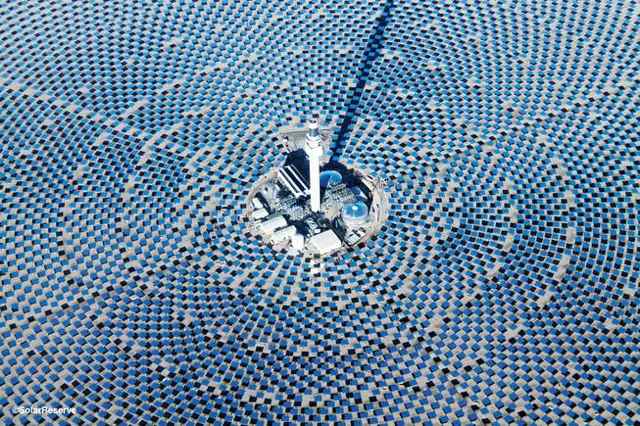forum
library
tutorial
contact

Bright Ideas: New Regulations
Pave Way for Solar Energy
by Staff
Las Vegas Sun, July 6, 2015
|
the film forum library tutorial contact |

|
Bright Ideas: New Regulations
by Staff
|
Experts are optimistic solar power can eventually compete with traditional energy sources
 Where is solar energy headed in Nevada?
Where is solar energy headed in Nevada?
The state basks in an average 250 sunny days a year, and the push to turn our clear skies and sun rays into energy grows every year.
In fact, Las Vegas is the third-sunniest city in the country, tied with Phoenix and Tucson, and just behind Yuma, Ariz., and Redding, Calif., according to the National Oceanic and Atmospheric Administration.
Nevada also ranks third in solar energy produced per capita, at 122.9 watts, trailing only Arizona and Hawaii. Nevada falls fourth in total amount of energy produced by solar power, behind Arizona, California and New Jersey.
There is enough solar capacity in the state to power 64,000 homes for a year, according to the trade group Solar Energy Industries Association, and Nevada installed 47 megawatts of new solar energy capacity in 2013, ranking 12th nationally. New projects and players in the field emerge frequently.
By state law, a certain percentage of electricity provided by NV Energy must come from renewable resources, with a specific emphasis on solar power. By 2021, NV Energy must build or acquire renewable energy sources capable of producing at least 50 megawatts. After 2016, 6 percent of NV Energy's retail electricity must come from solar plants, and by 2025, 25 percent must come from renewable sources.
Stephen Brown, director of UNLV's Center for Economic and Business Research, says commercial solar power in Nevada is more economically viable than other renewables, such as wind power, but still has a long way to go to be cost competitive.
"We're still at a point where neither solar nor wind energy would be used for providing electricity in Las Vegas if it weren't for the regulatory push," Brown said. "If you put yourself in an isolated part of Nevada, where you're not close to the electricity grid, then wind and solar energy may be attractive economically."
Engineers and scientists are working on thinner, lighter materials to turn sunrays into electricity and designing new methods of storing power.
Renewable energy sources still are troubled by intermittency issues. Solar and wind power systems need backup from conventional energy sources to take over when the sun isn't shining or the wind isn't blowing.
Crescent DunesOwned by SolarReserve, the Crescent Dunes 110-megawatt concentrated solar power project in Tonopah was supposed to open in 2014 but experienced delays. It is in the commissioning phase now and is scheduled to open later this year. It is the state's largest solar power plant.
Thanks to an advanced energy storage system, officials say, it can produce power for customers even at night and when it is cloudy.
By comparison, the Ivanpah Solar Electric Generating System near the California-Nevada border was expected to produce enough electricity to power a city of 140,000 homes when it opened in early 2014, but in its first year, the plant produced only about half of its expected annual output. Clouds, jet contrails and weather had a greater effect on the plant than the owners had anticipated.
The Crescent Dunes project uses 17,500 heliostat mirrors to focus the sun's thermal energy to heat molten salt that flows from a 640-foot solar power tower to underground storage tanks, where the salt is used to produce steam and generate electricity. The salt can withstand a very high temperature without melting and can be used to store energy. Excess thermal energy is stored in the molten salt and can be called upon at any time to create additional power in the evening or when direct sunlight isn't available, increasing the stability of the grid and reducing the need for carbon pollution-emitting generators.
The Crescent Dunes array is the first of its kind in the United States and the tallest molten salt tower in the world.
learn more on topics covered in the film
see the video
read the script
learn the songs
discussion forum
